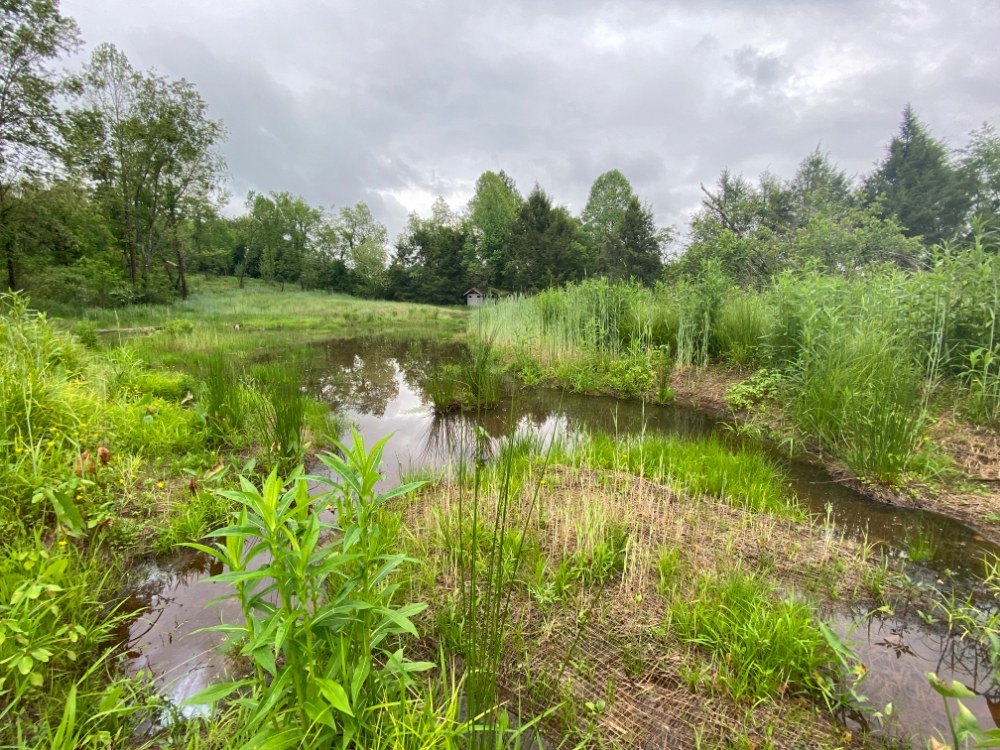Wetlands Are Not Wastelands

By Torry Nergart, Conservation Easement Manager
How we treat the least among us is a reflection of our true selves. The same is certainly true for how we treat our environment.
For so long now, wetlands have been thought of as lesser, of no importance other how they can be converted into some economical use. In fact, many governing bodies classify wetlands as “wastelands” for various purposes such as property taxation and regulation.
Wetlands are derided and called many negative names: swamps, quagmires and morasses. Culturally, we are taught to fear wetlands as they may be hiding creatures that we have irrational fears of.
To have irrational fears usually translates into doing violence against the thing we fear. Our landscape tells the tale of that violence. Our wetlands are drained, ditched, diked, capped and sprayed, always to suit some human-centered purpose and we wonder why the nostalgic parts of our childhood can’t be shared with the new generation.
Wetlands are not wastelands. Wetlands do support human values, though it requires an ecological view to see that. Wetlands are not murky, but are hotspots for biodiversity teeming with life.
We need wetlands now more than ever. We are faced with the human-caused extinction crisis losing species by orders of magnitude above any natural calamity.
Wetlands support around a third of all threatened or endangered species. We are faced with sharp increases in flooding events due to the climate crisis. Wetlands absorb water like sponges helping mitigate damage downstream. Wetlands also capture atmospheric carbon at greater rates than many other ecosystems also mitigating the climate crisis.
It is a combination of the loss of biodiversity and loss of climate stability; together with unsustainable resource use and irreparable resource extraction we find ourselves in what could be called the ‘ecological crisis.’
Simply put, our cumulative activities that affect the Earth have reached a point that the Earth can no longer support.
A healthy response to crisis is to manage the individual causes and meet a host of woes with a host of helpers.
One part of responding to the ecological crisis has to be restoring wetlands. While whole sides of cleaved mountains cannot be put back together, wetlands are different. In many cases they are very resilient and able to be restored.
When Conserving Carolina was offered for purchase a former wetland converted for human economic purposes, we jumped at the opportunity knowing the potential to bring ecological gains.
In restoring a wetland at the confluence of Mud Creek and the French Broad River, streams were put back into natural braiding channel patterns, drainage ditches were plugged, dikes were leveled and low spots were left.
Even before the reintroduced native plants were growing, life began to come back. Right away, salamanders began laying eggs directly into the matting fabric that stabilized banks. The number of birds and bird species increased tenfold. Now that the plants have had a chance to establish, the biodiversity is becoming even richer.
It was a bit of hard graft, but the positive results are there. The solutions are workable when we remember that when all parts of the ecosystem do well, us humans do too.
Torry Nergart is an avid adventurer, a local Brevard dad and spouse, and just happens to be conservation easement manager for Conserving Carolina, a calling that often puts him in a climbing harness, or waders, on a bike, or, yes, in a kayak, too, to protect the land and water we all love.